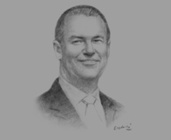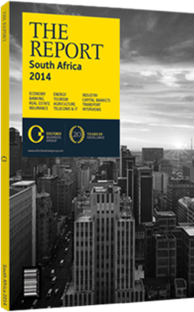OBG talks to Barry Scott, CEO, South African Insurance Association

Interview: Barry Scott
What short-term products and services provide the most opportunities for growth?
BARRY SCOTT: Three segments that have the largest scope for growth are motor insurance, micro-insurance and agriinsurance. Motor is currently the biggest class of insurance, yet only 35% of cars on the road are insured. The problem is the high cost of premiums, which is driven by the cost of claims. About 10-15 years ago vehicle theft accounted for about two-thirds of the cost of claims, the rest coming from accident damage. After a major project to tackle vehicle theft was put in place, we have seen an almost 180-degree turn, with accident damage now making up 80% of claims and a new focus on the cost of crashes. The main issue is that we need to improve vehicle safety. Unless we can cut the number and cost of accidents, it will be very difficult to extend the 35% base of insured vehicles. Another option is compulsory third-party insurance. South Africa is one of the few countries in the world that does not have this, and we would like to see it put in place as this would help significantly improve motor insurance.
Micro-insurance is another segment that requires attention. Typically, short-term insurance buyers in the country are at the top end of the “living standards measure” (LSM) scale, and account for only some 15% of the population. We need to find a way to bring insurance products to the lower LSMs. Legislation on microinsurance was expected to be passed a couple years ago and would have greatly reduced the burden imposed on micro-insurers by the coming solvency asset management (SAM) supervisory regime, but this legislation has been shelved. There’s also an issue with distribution channels: commissions will not be sufficient to support a traditional broker model for selling insurance to those on the lower end of the income spectrum, so an alternative mechanism is needed that does not require commission funding of intermediaries.
Last, there is potential in agri-insurance as the state looks to transform the farming community. We used to have multi-peril crop insurance covering all areas of farming risk, but this proved unsustainable due to losses from inclement weather. We are now looking to work with government to determine how to extend insurance cover and provide a better base for emerging farmers. Continuing crop insurance may require a state subsidy of premiums, as in some other countries.
How will the twin peaks regulatory structure affect insurers’ outlook and cost controls?
SCOTT: The environment of increasing regulation has put more of a focus on compliance. About 10 years ago the industry had very few pieces of specific insurance legislation; now we have increasing volumes of it. This is primarily driven by South Africa’s membership in the G20, which requires its financial services sector to reach international standards, and by the effects of the global financial crisis. Once regulations like SAM and the “treating customers fairly” policy come into force under the country’s new twin peaks model, we will be scrutinised against the top financial markets in the world. The market will generally benefit going forward and still be profitable relative to other insurance industries globally, but for now these changes increase the cost of compliance – almost to the point where many insurers are absorbed by regulation instead of building their market. It will also be difficult for smaller insurers to comply, which could lead to some consolidation.
Which alternative and emerging distribution channels might be used to improve penetration rates?
SCOTT: Brokers still comprise more than half of the personal lines business, but their share is declining – direct channels now make up about 40%. The personal lines business across the world is moving away from the broker model, and there is a strong role for technology to play as direct players can use data to understand their clients better. As the level of income grows generally and people start buying more assets that need to be insured, new channels such as mobiles and affinity groups can be used to reach more and more people.
You have reached the limit of premium articles you can view for free.
Choose from the options below to purchase print or digital editions of our Reports. You can also purchase a website subscription giving you unlimited access to all of our Reports online for 12 months.
If you have already purchased this Report or have a website subscription, please login to continue.

